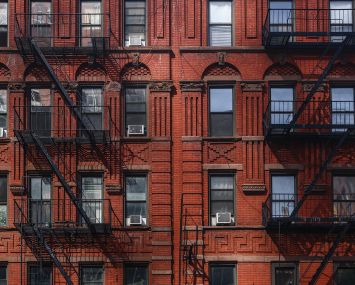Fourth-Quarter Activity Rescues Manhattan Investment Sales in 2021
By Robert Knakal February 7, 2022 2:00 pm
reprints
At the end of the third quarter of 2021, the Manhattan investment sales market for trades over $10 million was on pace to notch $9.6 billion for the year. That total, if achieved, would have been about $1.5 billion lower than the 2020 total of $11.1 billion, which almost everyone thought would be the trough of the cyclical volume of sales given the horrendous impact that the pandemic had on our local real estate market.
Thankfully, the activity in fourth-quarter 2021 saved the day and the results for the year surpassed 2020’s totals.
As I always like to do, I will provide some relative perspective on the cycle. Clearly, in the over-$10 million sales market in Manhattan, the peak of the cycle was in 2015. In that year, the dollar volume was $57.5 billion and the number of properties sold was 484. Both of these totals were records for the Manhattan market. (It should be noted that when taking into consideration all sales above $500,000, as opposed to above $10 million, the peak years in the two volume metrics were different. The number of properties sold peaked in 2014 with 5,534 properties, and then, in 2015, dollar volume peaked at $80.1 billion — two all-time records.)

Since 2015, the volume metrics have been consistently falling — until fourth-quarter 2021 activity vaulted 2021 above the 2020 total. In the last year of 2021, there were $6.8 billion of sales in Manhattan, the highest quarterly total since the $9.5 billion observed in fourth-quarter 2019. Last year also contained the lowest quarterly total in the cycle as its first quarter total was just $1.17 billion, surprisingly below the $3 billion in fourth-quarter 2020 and just below the $1.25 billion total in third-quarter 2020, which most market watchers assumed was going to be the cyclical low point. The $6.8 billion total in the last three months of 2021 brought the annual total to $14 billion, 26 percent above the $11.1 billion achieved in 2020. Notwithstanding the fact that this annual total was 76 percent below 2015’s $57.5 billion, it was great to see the turnaround in the direction of the dollar volume of sales.
The number of properties sold had an even more impressive performance in 2021. In fourth-quarter 2021, there were 65 transactions over $10 million in New York City, the highest quarterly total going back to the same period in 2018. The 65 trades resulted in 167 for the year, a 61 percent increase over the 104 that occurred in 2020. This total was 65 percent below the cyclical peak in 2015. Unlike the dollar volume metric, the quarterly low point in this cycle was in third-quarter 2020, when there were just 15 sales.
This combination of rising sales numbers and dollar volume is just one of the reasons why I am optimistic about the market moving forward. The number of properties sold has historically been a lead indicator of directional shifts in market activity. The dollar volume has tended to lag the number of sales so the 61 percent increase in the number of sales and the 26 percent increase in dollar volume are not unusual to see, and foreshadow subsequent increases in dollar volume — a reason for optimism.
Among the other reasons why I am optimistic is that we are coming out of the longest period of downward correction we have seen since at least 1984. Even during the savings and loan crisis in the early 1990s, the correction only lasted four years. If the turnaround in volume is confirmed to be first-quarter 2021, this correction lasted a remarkable 66 months, or five and a half years, having started in October 2015. Given the cyclical nature of the market, an upward cycle must be on the horizon.
After this lengthy correction, which stretched the rubber band so much, the snap back could be sharp and might provide an explanation for the robust activity we are now seeing. Capital is flowing into the market, new buyers are emerging, contract signings are rising, and we have upward pressure on most property values for the first time in years.
Due to the inertia in Washington, capital gains tax increases and modifications to 1031 exchanges — two things that could profoundly impact the sales market — aren’t the threats they once seemed to be. Now the concern is over the Federal Reserve’s interest rate policy. Some are projecting four to six rate increases this year, which, if implemented, would impact the market.
But that is a topic for another column.
Robert Knakal is chairman of New York investment sales at JLL.



